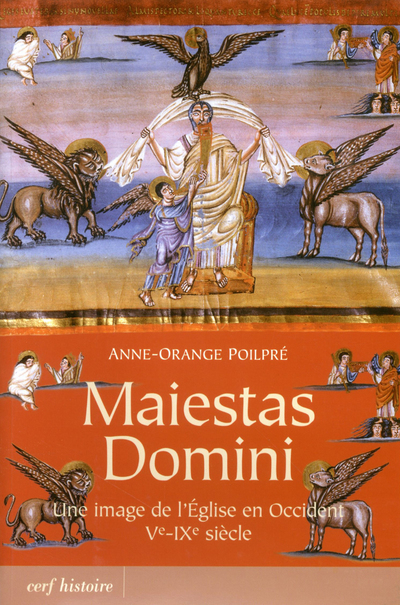La " Maiestas Domini " figure les quatre Vivants de l'Apocalypse rassemblés autour du Christ. C'est l'une des premières iconographies dogmatiques élaborées en Occident après la paix de l'Église en 313. Cette représentation, destinée à devenir centrale au Moyen Âge, traduit une vision de l'Église terrestre à travers son modèle céleste. Dans l'Italie de l'Antiquité tardive, dans les royaumes mérovingiens, puis dans l'Empire carolingien, la " Maiestas Domini " donne forme aux conceptions ecclésiales qui s'élaborent dans la pensée dogmatique, institutionnelle et parfois politique du contexte historique où elle se déploie. En abordant tous les types de support artistique [décor monumental, manuscrits, orfèvrerie], cet ouvrage met en lumière la variété des occurrences et des mises en oeuvres de cette iconographie, dans une période de cinq siècles [Ve-IXe siècle], abordant ainsi tant la question de ses origines intellectuelle et formelle dans l'Antiquité chrétienne, que ses premiers développements médiévaux. -- The "Maiestas Domini' features the four living creatures of the Apocalypse assembled around Christ. It is one of the first examples of dogmatic iconography produced in the West after the peace of the Church in 313. This representation, which was to become a central feature in the Middle Ages, translates a vision of the earthly Church via its heavenly model. In late Antiquity in Italy, in the Merovingian kingdoms and later the Carolingian Empire, the "Maiestas Domini' gave form to ecclesial concepts that were elaborated in the dogmatic, institutional and sometimes political thinking of its historical context. By covering all kinds of artistic supports (monumental decor, manuscripts, silverware), this book highlights how this iconography was exploited in a variety of ways over a period of five centuries (5th – 9th), treating the question of its intellectual and graphic origins in Christian Antiquity as well as its first developments in Medieval times.




